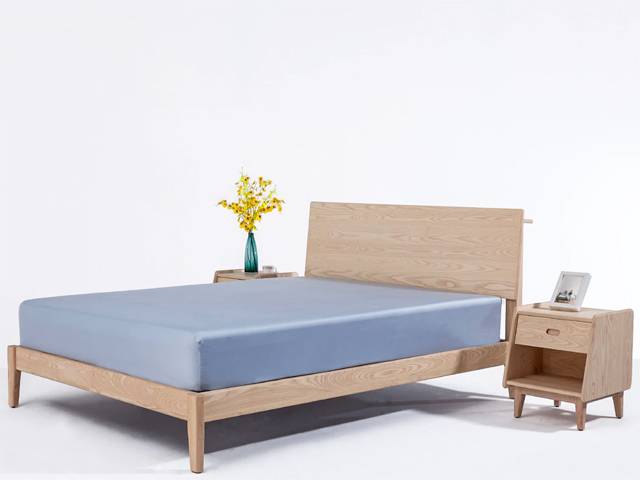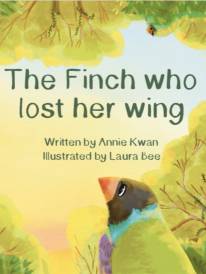Can Furniture Be an Investment?

Can Furniture Be an Investment? 3 Tips for Choosing It Wisely
Investing is uncertain, complicated and tricky. The goal is to invest your money in assets that will appreciate rather than depreciate – but it doesn't always work out that way. When it comes to furniture, the odds are stacked against you that you'll make a purchase that goes up in value. These days, you're doing well if you can manage to select furniture pieces that hold their value, let alone appreciate.
However, it is definitely possible to choose furnishings that hold their value - or even go up in value. There are vintage furniture pieces worth millions of dollars. It is possible – not likely, mind you, but possible - for furniture to be a sound long-term investment.
So how do you choose furniture that could turn out to be a wise investment for the future? Let's take a look at 3 tips that can help you get the best possible return for the money you'll spend on your furniture:
1. Choose Classic Pieces, Not Fad Furnishings
Classic pieces are the ones that have been around forever, and will continue to be usable and appealing for the foreseeable future. A couple examples of this are wing chairs and Persian rugs. A basic solid timber bed base is another example of a classic furniture piece that is likely to remain usable far into the future.
Fad furnishings, in contrast, are those items that are trendy now but will soon go outdated. An example of a fad would be all those rose gold finished mirrors, light fixtures and other furnishings that were so popular a few years ago. A decade from now, you probably wouldn't want to have any of them cluttering up your place.
If you do buy any fad furnishings, make sure you stick with affordable and easily replaced items that could be expected to wear out relatively quickly anyway. It's fine to buy trendy scatter cushions for your sofa, placemats for your tables or hand towels for your powder room.
2. Buy Solid Timber, Not Particle Board
Lately, furniture manufacturers have been using particle board, which is a mixture of compressed wood chips and resin, to create their furniture. This type of furniture can resemble solid timber – because, often, a timber veneer will be placed on the outside of each piece. One appealing advantage that has made this type of furniture popular is its cheaper initial cost.
However, a low priced piece of furniture doesn't typically result in a good investment. Particle board furniture is much more easily damaged and ruined than solid timber furniture is – and so you should expect that it would need replacing sooner. That makes it far less attractive if your goal is to make a sound long-term furniture investment.
As the years pass, you're likely to find that solid timber furniture would be a better investment, because it is probable that you could repair it when it gets marred. It is possible to resurface, paint or restain solid timber pieces when they suffer damage.
3. Imagine Your Future
Ideally, your furniture will last at least 10 years; but there is potential for it to last even longer. Think of the vintage and antique furniture pieces that have been around for decades – and in some cases, even a century or more. If you choose your furniture well, and take meticulous care of it, it could last you quite some time.
What will your life be like 10+ years from now? Will you be married? Will you have children? Will you get a new pet? What other dramatic life changes might be in store for you?
Of course, you probably do not possess the psychic powers that would be required to answer those questions with 100 percent certainty. However, if you have goals for the future, do keep them in mind when you buy furniture.
If your plans are to have 5 kids and 5 cats by the time you turn 30, there is no sense in buying furniture upholstered in white silk. In that case, you'll want to choose something more practical, durable and stain resistant. If you're single now, but you want to get married, you may wish to refrain from buying a lace-trimmed pink floral chaise lounge for your main living area. Imagine how your future husband and his mates will feel hanging out at your place, and purchase furniture that would be suitable for entertaining them.
If you keep these tips in mind when you buy your furniture, there is an excellent chance that you will end up making a reasonably good investment. While there is no guarantee that you'll be able to eventually re-sell your furniture for more than you originally paid for it, you will at least hopefully end up with pieces that can comfortably remain in your home for the long term.
However, it is definitely possible to choose furnishings that hold their value - or even go up in value. There are vintage furniture pieces worth millions of dollars. It is possible – not likely, mind you, but possible - for furniture to be a sound long-term investment.
So how do you choose furniture that could turn out to be a wise investment for the future? Let's take a look at 3 tips that can help you get the best possible return for the money you'll spend on your furniture:
1. Choose Classic Pieces, Not Fad Furnishings
Classic pieces are the ones that have been around forever, and will continue to be usable and appealing for the foreseeable future. A couple examples of this are wing chairs and Persian rugs. A basic solid timber bed base is another example of a classic furniture piece that is likely to remain usable far into the future.
Fad furnishings, in contrast, are those items that are trendy now but will soon go outdated. An example of a fad would be all those rose gold finished mirrors, light fixtures and other furnishings that were so popular a few years ago. A decade from now, you probably wouldn't want to have any of them cluttering up your place.
If you do buy any fad furnishings, make sure you stick with affordable and easily replaced items that could be expected to wear out relatively quickly anyway. It's fine to buy trendy scatter cushions for your sofa, placemats for your tables or hand towels for your powder room.
2. Buy Solid Timber, Not Particle Board
Lately, furniture manufacturers have been using particle board, which is a mixture of compressed wood chips and resin, to create their furniture. This type of furniture can resemble solid timber – because, often, a timber veneer will be placed on the outside of each piece. One appealing advantage that has made this type of furniture popular is its cheaper initial cost.
However, a low priced piece of furniture doesn't typically result in a good investment. Particle board furniture is much more easily damaged and ruined than solid timber furniture is – and so you should expect that it would need replacing sooner. That makes it far less attractive if your goal is to make a sound long-term furniture investment.
As the years pass, you're likely to find that solid timber furniture would be a better investment, because it is probable that you could repair it when it gets marred. It is possible to resurface, paint or restain solid timber pieces when they suffer damage.
3. Imagine Your Future
Ideally, your furniture will last at least 10 years; but there is potential for it to last even longer. Think of the vintage and antique furniture pieces that have been around for decades – and in some cases, even a century or more. If you choose your furniture well, and take meticulous care of it, it could last you quite some time.
What will your life be like 10+ years from now? Will you be married? Will you have children? Will you get a new pet? What other dramatic life changes might be in store for you?
Of course, you probably do not possess the psychic powers that would be required to answer those questions with 100 percent certainty. However, if you have goals for the future, do keep them in mind when you buy furniture.
If your plans are to have 5 kids and 5 cats by the time you turn 30, there is no sense in buying furniture upholstered in white silk. In that case, you'll want to choose something more practical, durable and stain resistant. If you're single now, but you want to get married, you may wish to refrain from buying a lace-trimmed pink floral chaise lounge for your main living area. Imagine how your future husband and his mates will feel hanging out at your place, and purchase furniture that would be suitable for entertaining them.
If you keep these tips in mind when you buy your furniture, there is an excellent chance that you will end up making a reasonably good investment. While there is no guarantee that you'll be able to eventually re-sell your furniture for more than you originally paid for it, you will at least hopefully end up with pieces that can comfortably remain in your home for the long term.
MORE





